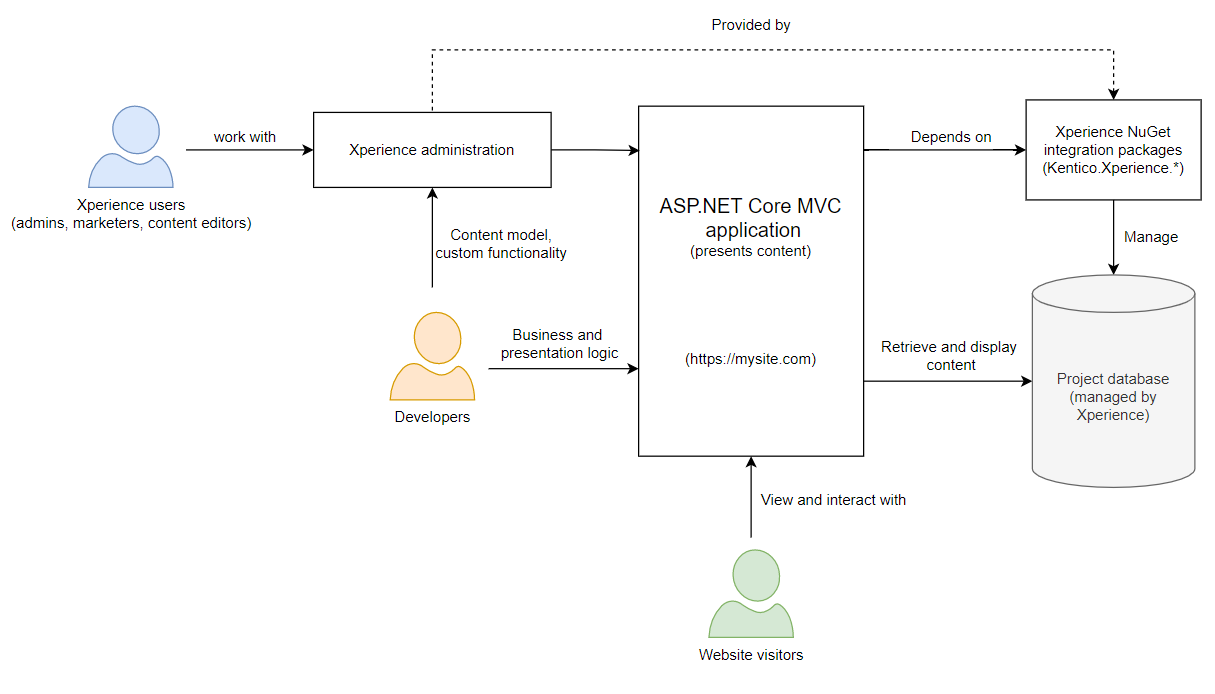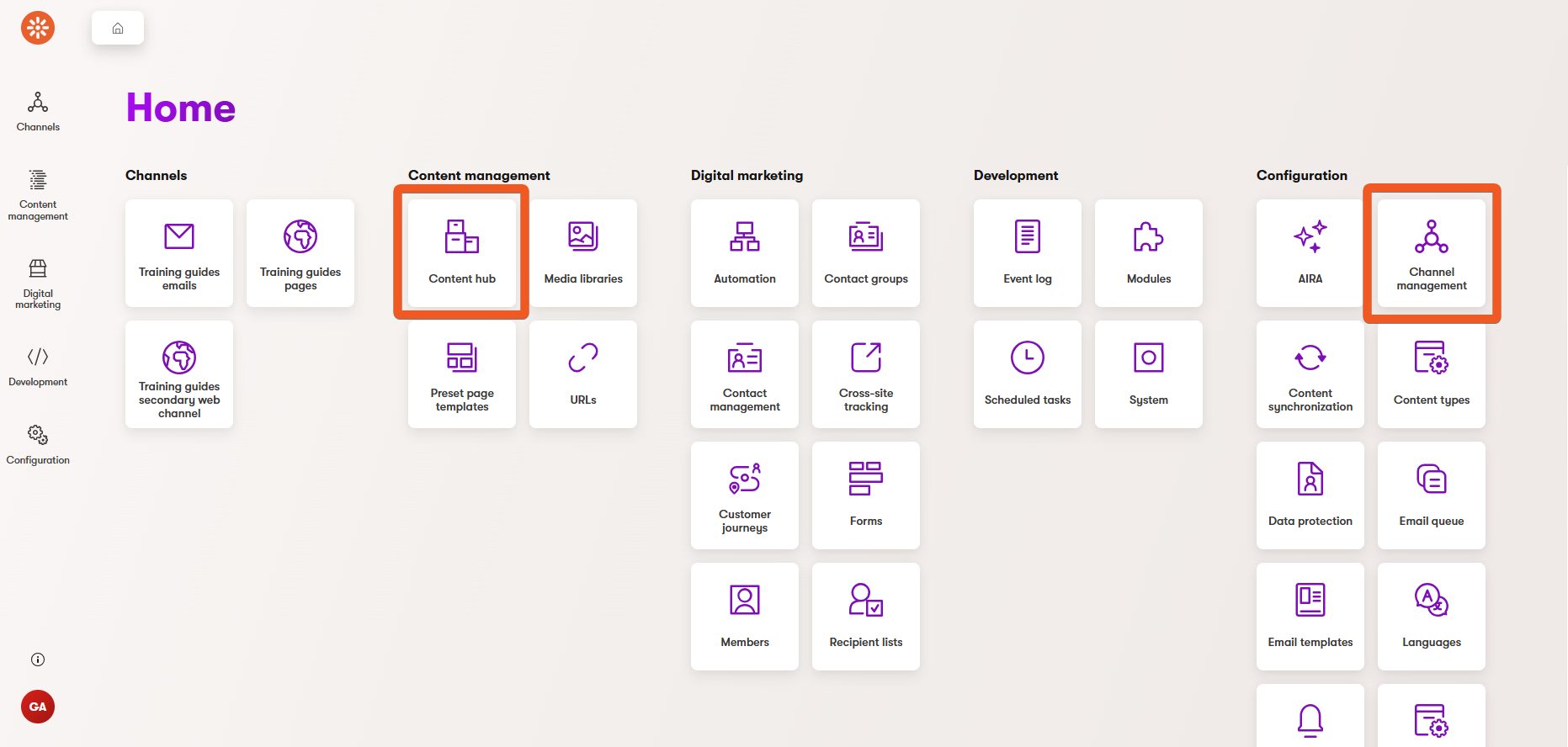Module: Xperience by Kentico Developer kickstart
1 of 13 Pages
Overview
Welcome to a kickstart of the Xperience by Kentico development!
Throughout this series, we’ll create and configure a simple website fully managed by Xperience by Kentico.
Using the MVC design pattern, you’ll build logic that displays pages managed by Xperience and a simple navigation menu. You will learn how to work with your site content (e.q., articles, products, etc.) - modeling it with content types, storing it in content items, and making it reusable.

We designed the steps to help you develop an Xperience website from scratch. You can find the complete implementation in this repository.
Requirements
To follow along with this series, we recommend your machine has the following installed:
Microsoft SQL Server 2022 (or compatible version, such as the free SQL Server Express Edition)
The collation set for the SQL server must be case-insensitive.an IDE that supports ASP.NET Core development, such as Visual Studio or Visual Studio Code
Before you start
These materials assume you are familiar with the ASP.NET Core and C# development concepts, and have access to standard development tools.
We do not aim to teach you the general development principles but to introduce how website development works in Xperience.
Use these free resources to quickly get on board with the ASP.NET Core MVC development and C# syntax nuances.
While we won’t fully leverage the MVC architectural pattern, you’ll find it beneficial to know the concepts behind the approach to understand how certain Xperience features work.
Development model of Xperience by Kentico
Xperience projects are ASP.NET Core applications with two main components:
- Live site displays content managed by Xperience to your visitors. It retrieves the content using the Xperience API, integrated into the application via Xperience NuGet packages.
- Xperience administration provides a user interface to edit and manage content, and to configure various system features.
The following diagram summarizes the general roles of the main personas that interact with an Xperience site – Xperience users, developers, and website visitors:

Xperience administration
The administration interface allows editors to manage their project’s content.
The Content hub application is where users manage reusable content items (structured content), which they can reference in various channels.
A website channel represents a site in the administration UI. Each website channel has its own application. Editors create pages and organize them in a content tree. They can add and modify content, use the Page Builder and workflow features, and preview changes before publishing their content live.
Your role as a developer is to design the content structure for editors to work with based on customer business requirements. You can also create custom Page Builder components and UI controls or add new administration interface functionality.

All code samples you will see throughout the series come from our Kickstart repository, where you can find the complete implementation of the simple website from this Kickstart series.